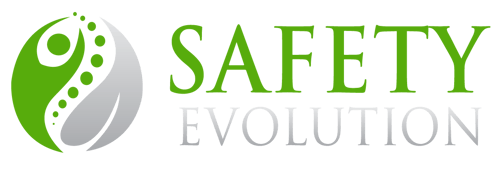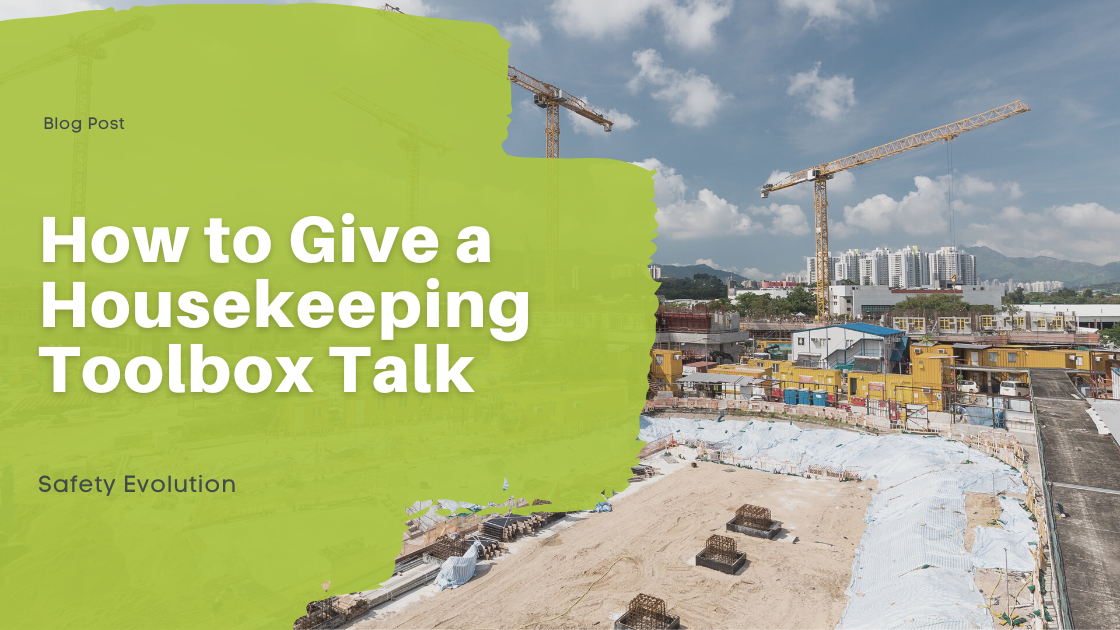Of all the topics for a toolbox talk, this is perhaps the most boring. Just the word “housekeeping” is a bit of a turn-off for many people, far less intriguing (and seemingly far less important) than something like fall prevention. On the surface, housekeeping is a mundane task that’s all about appearances.
However, good housekeeping on site underpins all kinds of safety practices and goes a very long way towards reducing incidents. A toolbox talk on the topic should emphasize how crucial it is to keep things shipshape, the possible consequences of not doing so, and how housekeeping—or site keeping, if you prefer—is managed and implemented.
Housekeeping isn’t just about making everything look clean and tidy for the sake of aesthetics. A work area that’s genuinely orderly, tidy, free of spills and litter, and has everything in its secure place is a much better, safer, and more efficient place to work. This study, along with the experiences of many companies and construction workers, have proven this to be true.
When discussing good housekeeping with the workers on any site, start with underlining how crucial and beneficial it is to them individually and to the project as a whole. It will keep them safer, make their job easier in the long term, and eliminate the stress that comes with moving around a site full of clutter, dirt, and hazards. A considerable percentage of on-the-job accidents are traced back to poor housekeeping practices also referred to as negligence—ask whether anyone has a story to share that illustrates this or find one to use to kick off your toolbox talk.
Making housekeeping part of the routine
Good housekeeping, on a construction site, just like in any other context, is maintained rather than achieved. The main point to focus on in a housekeeping toolbox talk is that workers should be doing small things throughout their day to create and maintain order—not undertaking a huge clean-up at the end of a shift. Conscientious employees will incorporate cleaning, tidying, and adjusting their workspace into their day, so that the job never becomes overwhelming.
These are some of the practices to cover. Focus on those most relevant to your specific site, and elaborate with details where applicable. Invite discussion amongst those present regarding how these practices can prevent accidents and injury.
- Keep floors and walkways clear of debris. Put trash into the right receptacle, and put clutter back where it belongs—securely and appropriately stored.
- Secure cords out of the way to reduce both trips and electrical incidents. This article by Occupational Health and Safety has some great information on extension cord safety. Hoses must also be kept tidied and off the floor—they too are tripping hazards.
- Immediately clean up any spills, as they can cause slips.
- Take care to regularly dispose of flammable or hazardous materials appropriately. Follow all guidelines regarding the storage of materials like these.
- Set up and use proper lighting before beginning work in dim conditions.
- Stay on top of any build-up of snow and ice in the winter.
- Be vigilant in keeping emergency exits, stairways, and fire escapes clear. Blocking the exits is a huge safety hazard.
- Return and store power tools safely and tidily to ensure they remain in good working order.
- Remove any protruding nails or sharp objects as soon as they are noticed.
If workers can keep on top of all of these aspects of effective housekeeping (and any other relevant site-specific ones), their work environment will be much safer and more pleasant.
Getting with the program
While a lot of good housekeeping is just common sense, tidiness, and cleaning up after oneself, it pays to have a written policy or program. This will guide workers in what they need to do each day and makes a good base for any toolbox talk on the subject. For companies in the USA, it can show that the site is complying with OSHA’s standards for housekeeping.
Introduce any housekeeping program or policy to workers and talk through what it will look like for them to follow it. If they are familiar with it, a housekeeping safety talk is a good reminder and refresher on what it contains. These can be specific to your worksite and include things like instructions for how to store tools and combustible materials and how to clean spills.
When incidents do happen and reports are made, the feedback can be used to alter or add to a housekeeping program to prevent them from happening again. Make this process clear to the workers and encourage them to suggest changes—after all, they know best how things happen in practice. A toolbox talk can double as an information-gathering session for those in charge of such policies to glean valuable insight from those “on the ground.”
A crucial part of having a housekeeping program is enforcing it, and this is generally done with inspections of the worksite. Usually checklist-based, these can be designed and implemented in many ways. During a toolbox talk, the leader should mention what’s included in the inspection and field any questions about how they will be carried out and the consequences of failing to pass them.
Safety management made simple
Staying on top of paperwork is just one more thing to add to the list on a busy construction site. Safety Evolution's simple and effective safety management platform takes care of a lot of the busy work involved in policies, reporting, checklists and more.
Time spent filing physical forms and searching for bits of paper is time that’s not being spent on good housekeeping or inspiring toolbox talks!
Safety Evolution's Free Toolbox Talk Download Package
Finding toolbox talks for your safety meetings last minute can be a hassle.
Download this free package of weekly toolbox talks such as Housekeeping, Hand Tool Safety, Forklift Safety, Trench Safety, Workplace Violence, Housekeeping toolbox talk, and more to make life easy!
Sign up below to receive our weekly newsletter with helpful safety content including weekly toolbox talks!



